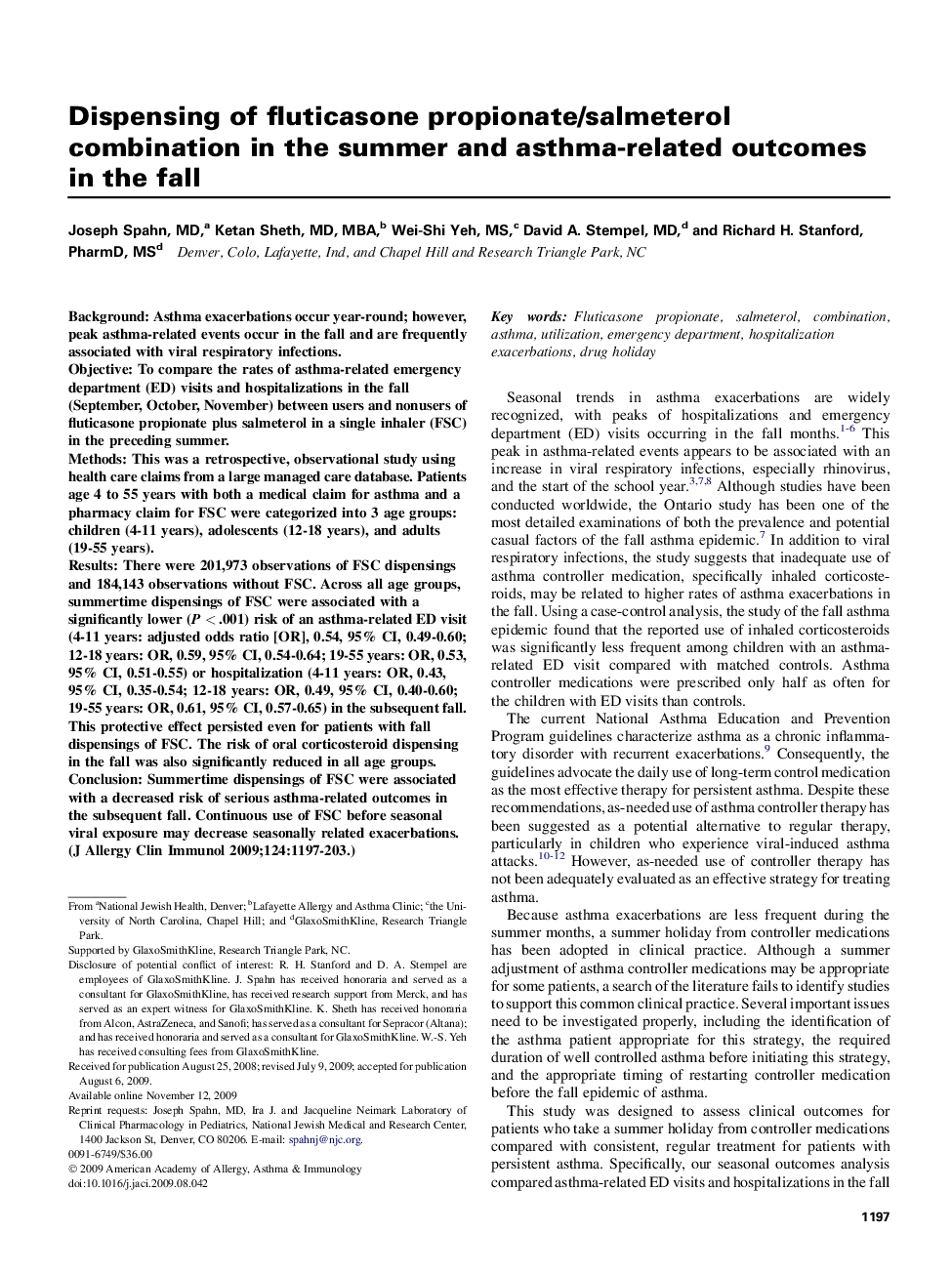| Article ID | Journal | Published Year | Pages | File Type |
|---|---|---|---|---|
| 3201062 | Journal of Allergy and Clinical Immunology | 2009 | 7 Pages |
BackgroundAsthma exacerbations occur year-round; however, peak asthma-related events occur in the fall and are frequently associated with viral respiratory infections.ObjectiveTo compare the rates of asthma-related emergency department (ED) visits and hospitalizations in the fall (September, October, November) between users and nonusers of fluticasone propionate plus salmeterol in a single inhaler (FSC) in the preceding summer.MethodsThis was a retrospective, observational study using health care claims from a large managed care database. Patients age 4 to 55 years with both a medical claim for asthma and a pharmacy claim for FSC were categorized into 3 age groups: children (4-11 years), adolescents (12-18 years), and adults (19-55 years).ResultsThere were 201,973 observations of FSC dispensings and 184,143 observations without FSC. Across all age groups, summertime dispensings of FSC were associated with a significantly lower (P < .001) risk of an asthma-related ED visit (4-11 years: adjusted odds ratio [OR], 0.54, 95% CI, 0.49-0.60; 12-18 years: OR, 0.59, 95% CI, 0.54-0.64; 19-55 years: OR, 0.53, 95% CI, 0.51-0.55) or hospitalization (4-11 years: OR, 0.43, 95% CI, 0.35-0.54; 12-18 years: OR, 0.49, 95% CI, 0.40-0.60; 19-55 years: OR, 0.61, 95% CI, 0.57-0.65) in the subsequent fall. This protective effect persisted even for patients with fall dispensings of FSC. The risk of oral corticosteroid dispensing in the fall was also significantly reduced in all age groups.ConclusionSummertime dispensings of FSC were associated with a decreased risk of serious asthma-related outcomes in the subsequent fall. Continuous use of FSC before seasonal viral exposure may decrease seasonally related exacerbations.
